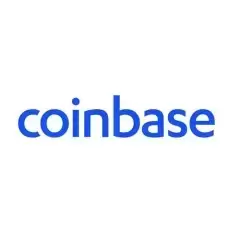 |
|
 |
|
 |
|
 |
|
 |
|
 |
|
 |
|
 |
|
 |
|
 |
|
 |
|
 |
|
 |
|
 |
|
 |
|
By: Hatu Sheikh, founder of Coin Terminal. Although blockchains and DApps are critical, crypto industry stakeholders often prioritize applications
Crypto industry stakeholders often prioritize applications over chains based on adoption principles and revenue distribution. However, without their underlying chains, DApps won't function. Moreover, the markets must hold up blockchains for long-term value generation.
Recently, a report by Token Terminal highlighted how revenue generation parameters could flip the thesis of 'Fat Protocols' by Joel Monegro.
In 2024, blockchains, controlling 70% of the total crypto industry market cap (excluding Bitcoin and stablecoins), earned $6 billion in fees. Meanwhile, DApps, with just a 30% market share, generated $3.3 billion, generating 35% of total onchain fees. The trend continues in Q1 2025 as DApps recorded $1.8 billion in total fees compared to $1.4 billion for blockchains.
According to the report, apps generate real value and user interaction, as higher fees reflect increased usage rates.
“No one logs into an app just to access a blockchain. People use apps to trade, play, invest, socialise and spend time. So, apps are generating the value and revenue opportunities.”
As apps are users’ first interaction layer, they have higher demands and more growth channels. The report adds: “Blockchains may have built the roads — but the apps are building the cities.”
But without “roads,'’ it's impossible to navigate and access “cities.'’ Thus, such a value lens to evaluate whether the markets prefer chains or apps is a myopic perspective.
Analysts and crypto industry veterans must understand blockchain's critical role in running the crypto industry. Consequently, the crypto markets must always support blockchains irrespective of their economic value potential.
Blockchains are the fundamental trust anchor arbitrating transactions for decentralized applications through transparent and immutable ledgers. During multiparty DApp interactions, blockchains act as a truth source for tamperproof records, making chains an integral infra layer.
The chain vs. app binary argument is false because blockchains are essentially timekeepers for dAppData. Such timestamped data facilitates all onchain transactions and enables people to use DApps trustlessly.
It's irrelevant if a blockchain's value potential is based on revenue and user adoption because that's the task of gaming, social and financial applications. Blockchains are the foundational layer for building applications and other user products that generate capital returns.
Furthermore, despite liquidity and integration challenges, the steady rise of modular app chains is another instance of the importance of blockchain architecture. When resource-hungry apps consume network capacities, app chains solve the issue by functioning as independent blockchains to enhance performance and reduce latency.
Using app chains to solve a network's bottlenecks demonstrates that apps won't function independently and require the corresponding chain architecture. Each modular appchain thus has its own computational resources, storage capacities and resources to prevent competing applications from slowing down performance.
These examples illustrate why crypto markets value blockchains more than standalone applications. It's because apps won't survive without blockchains.
“Value” doesn't always mean financial incentives and growth metrics. Sometimes, value also comes from the market's recognition of their cardinal role within the industry. In this market scenario, blockchains will always be much more valuable than individual applications, regardless of fees and revenue.
Opinion by: Hatu Sheikh, founder of Coin Terminal
Disclaimer:info@kdj.com
The information provided is not trading advice. kdj.com does not assume any responsibility for any investments made based on the information provided in this article. Cryptocurrencies are highly volatile and it is highly recommended that you invest with caution after thorough research!
If you believe that the content used on this website infringes your copyright, please contact us immediately (info@kdj.com) and we will delete it promptly.
-

-

-

-

-

-

-

-

-

- AI, Crypto, and Projects: Navigating the Future of Digital Assets
- Aug 04, 2025 at 01:29 pm
- Explore the convergence of AI and crypto projects, uncovering key trends, insights, and potential investment opportunities in this dynamic space. From AI-powered trading to blockchain solutions, discover the future of digital assets.





























































